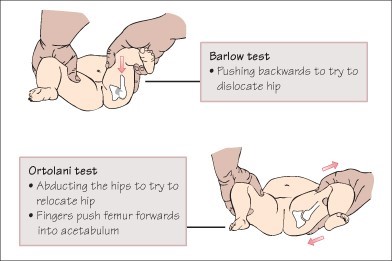A client receives a prescription for a fluid bolus of 0.9% sodium chloride, USP 200 mL to be infused in 30 minutes. How many mL/hr should the nurse program the infusion pump to deliver?
(Enter numerical value only.)
The Correct Answer is ["400"]
To calculate the mL/hr rate for the infusion pump, we can use the following formula: mL/hr = (Total volume to be infused in mL) / (Time in hours)
In this case, the total volume to be infused is 200 mL, and the infusion time is 30 minutes, which is equal to 0.5 hours.
mL/hr = 200 mL / 0.5 hours mL/hr = 400 mL/hr
Therefore, the nurse should program the infusion pump to deliver 400 mL/hr.
Nursing Test Bank
Naxlex Comprehensive Predictor Exams
Related Questions
Correct Answer is A
Explanation
The Ortolani maneuver is a physical examination technique used to assess for developmental dysplasia of the hip (DDH) in newborns. During the maneuver, the nurse gently abducts the infant's hips and applies gentle pressure to detect any instability or "click" at the hip joint. A positive Ortolani maneuver, where a click or clunk is felt or heard, can indicate the presence of a hip dislocation or dysplasia.
Asymmetrical buttocks can be a sign of hip dysplasia in newborns, and a positive Ortolani maneuver is an important finding that suggests a potential hip joint problem. Reporting this assessment test result to the healthcare provider allows for further evaluation and appropriate management of the newborn's hip condition.

The Plumb line test, which assesses fetal position curvature, is not directly related to hip dysplasia and may not be significant in this context.
The Babinski test, which reveals fanning out of the toes, is used to assess the integrity of the infant's neurological system and is not specific to hip dysplasia.
The Moro test, also known as the startle response, is a reflex assessment used to evaluate the newborn's neurological and sensory function. While it is important to assess the overall neurological status of the newborn, the Moro test is not specific to hip dysplasia.
Correct Answer is B
Explanation
It is important for the nurse to clarify the client's goals for hospitalization, including the client's understanding of the role of radiation therapy in palliative care. The nurse should also assess the client's understanding of the potential benefits and risks of radiation therapy and communicate this information to the healthcare provider.
Whether you are a student looking to ace your exams or a practicing nurse seeking to enhance your expertise , our nursing education contents will empower you with the confidence and competence to make a difference in the lives of patients and become a respected leader in the healthcare field.
Visit Naxlex, invest in your future and unlock endless possibilities with our unparalleled nursing education contents today
Report Wrong Answer on the Current Question
Do you disagree with the answer? If yes, what is your expected answer? Explain.
Kindly be descriptive with the issue you are facing.
